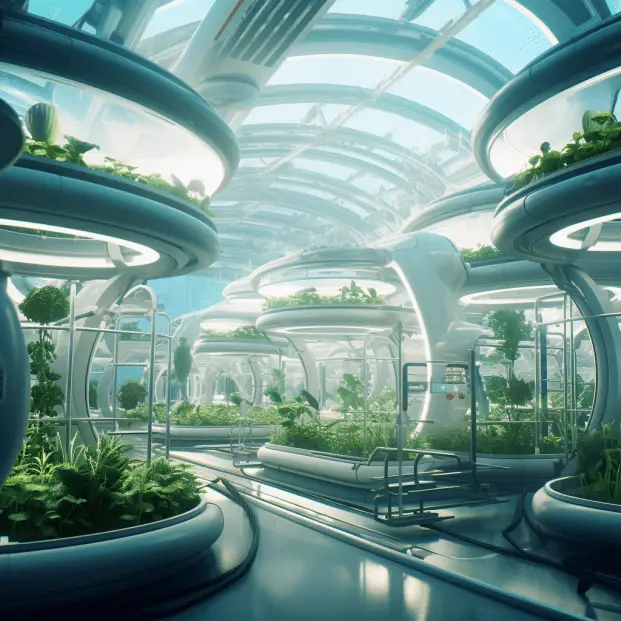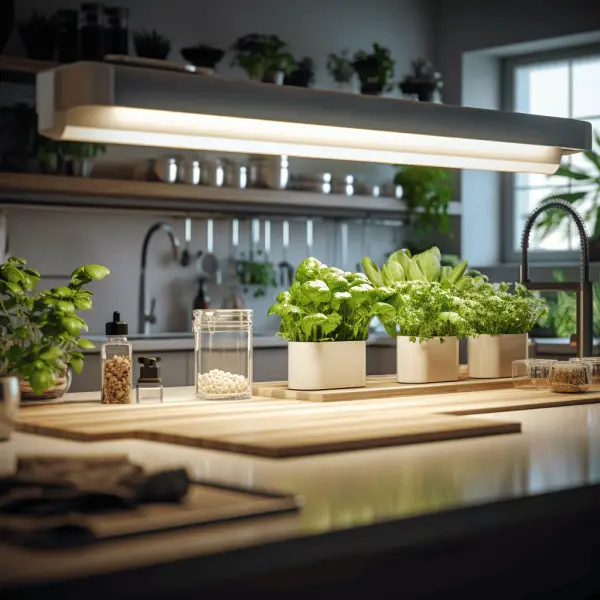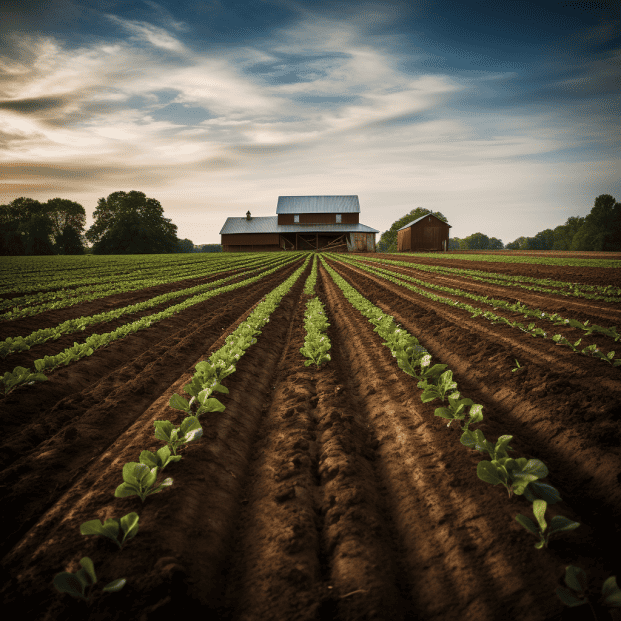What is the difference between traditional gardening methods and hydroponics? At first glance, they may seem quite similar – after all, both involve growing plants.
But when you dig a little deeper (pun intended!), there are some key differences between these two approaches that produce dramatically different results.
As an avid gardener who has dabbled in both traditional dirt plots and high-tech hydro systems, let me tell you – hydroponics is a total game changer!
I’ll never forget the look on my neighbor’s face when he saw the outrageous tomato harvest from my tiny hydro garden.
My secret? Swapping soil for nutrient-rich water!
In this beginner’s guide, I’ll share my experiences transitioning from traditional to hydroponic gardening.
I’ll outline the key differences and benefits of both methods.
Whether you want to boost yields, save space, or just have fun with technology, hydroponics has something to offer every type of gardener.
Stick with me to discover which approach could be right for your green thumbs!
KEY TAKEAWAY
What is the difference between traditional method and hydroponics?
The key difference between traditional farming and hydroponics (1) lies in the growing medium.
While traditional farming uses soil, hydroponics employs nutrient-rich water solutions, offering more controlled and efficient plant growth.
Traditional Farming vs. Hydroponics: An Overview
When it comes to growing plants and food, two main methods exist – traditional farming and hydroponic farming.
While both involve cultivating plants, there are some key differences between these approaches.
Traditional farming relies on soil as the medium to grow plants. (2)
Seeds are directly sown into fields or raised beds of nutrient-rich soil.
Farmers control variables like irrigation, drainage, and adding fertilizers or compost to enable healthy plant growth.
It’s an ancient practice used for centuries.
Meanwhile, hydroponic farming eliminates soil entirely.
Plants are grown in specialized nutrient solutions or inert mediums like perlite, gravel or coconut coir.
Their roots absorb all needed water and minerals from the hydroponic system itself.
These closed-loop systems allow crops to grow densely in controlled greenhouse environments.
While traditional techniques have fed the world for generations, hydroponics offers benefits like faster growth, higher yields, and less disease.
However, it requires more technology and investment.
The best approach depends on factors like land availability, resources, and what you aim to cultivate.
Understanding Hydroponic Systems and Traditional Farming

To further understand hydroponics versus traditional farming, let’s look at some key differences between these plant growth methods:
- Medium – Traditional uses soil. Hydroponics uses water or inert substances like perlite or gravel. This allows control over nutrients.
- Water – Traditional relies on irrigation. Hydroponics immerses roots directly in nutrient solutions. Less water is wasted.
- Space – Traditional requires substantial land. Hydroponics can be done anywhere – greenhouses, warehouses, or small indoor spaces.
- Yields – Hydroponics enables faster growth cycles and higher production per square foot. Traditional yields depend on climate and soil.
- Pests/Disease – Closed hydroponic systems greatly reduce exposure to pests and plant diseases. More pest control is needed in open fields.
- Costs – Hydroponics requires more technology and infrastructure initially. But it conserves water and space long-term.
- Sustainability – Traditional techniques like crop rotation maintain soil health. Hydroponics recycles and reuses water and nutrients.
- Labor – Both require daily management of plant needs like light, moisture, and nutrients. Automation can simplify hydroponic systems.
Overall, hydroponics and traditional farming take different approaches to cultivating plants and food.
Hydroponics offer unconventional ways to maximize productivity in non-traditional spaces.
Comparing Efficiency and Yield: Which Method Wins?

A major contrast between hydroponics and traditional farming is efficiency.
When optimized, hydroponic systems can significantly outpace traditional methods in plant growth time, crop yields, and productivity per square foot.
Since hydroponics provides perfect nutrient levels tailored to each plant variety, crops can grow up to 50% faster than in soil.
Fast growth cycles mean hydroponic farms can achieve up to 10 times more production per year – for example, getting 10 lettuce crop harvests vs 1 or 2 in soil.
By growing vertically in stacks or towers, hydroponics also vastly improves space efficiency.
A warehouse hydro farm can achieve 10-20 times higher yields per square foot than the same crops grown traditionally in open fields.
However, higher inputs are required to construct and operate hydroponic systems.
And traditional farming remains better suited for on a wider scale, like commercial commodity crops.
Small-scale hydroponic gardens can offset a family’s produce costs and maximize yards or patios.
Ultimately hydroponics enables greater control, faster growth, and higher yields from limited spaces.
But traditional techniques continue feeding the world thanks to vast global farming infrastructure.
Space, Resources, and Environmental Impact: A Contrast
In addition to efficiency, hydroponics and traditional farming differ significantly in their use of space, resources, and overall environmental impact:
- Land Usage – Hydroponics requires very little land and can utilize unused spaces like warehouses. Traditional farming requires substantial acreage.
- Water Conservation – Hydroponics recycles and reuses irrigation water, using 10 times less than soil farming. Runoff and evaporation waste more water in fields.
- Energy Use – Hydroponic systems rely heavily on electricity for lighting and climate control. Traditional farming uses energy for machinery, transport and processing.
- Environmental Control – Hydroponics allows complete control over plant environments, excluding pests and disease. Traditional farming interacts more with external conditions.
- Sustainability – Both methods have pros and cons. Traditional can maintain soil health through crop rotation. Hydroponics reuses resources but depends on electricity.
- Decentralization – Hydro farms allow food production virtually anywhere, increasing resilience. Traditional farming centralizes production in resource-rich regions.
Overall, hydroponics takes vastly less land and water resources but more energy inputs.
This enables year-round local food production almost anywhere using limited spaces.
Year-Round Farming and Crop Variety: Hydroponics vs. Traditional
When it comes to farming year-round and growing more diverse crops, hydroponics holds clear advantages over traditional techniques.
With complete environmental control, hydroponic greenhouses can grow crops 12 months a year, independent of seasons and weather.
Lighting, temperature, humidity and nutrient levels stay optimized for growth at all times.
Multiple crop cycles happen annually.
This allows expansion beyond typical regional produce offerings.
Exotic fruits and veggies can be viably grown locally, anywhere hydroponic farms exist.
For consumers, this unlocks access to a more varied, nutritional produce selection year-round.
Meanwhile, traditional soil farming remains limited by climate, outdoor temperatures, and day length.
Greenhouse use helps extend seasons at most.
And transportation logistics limit the variety that local stores can offer affordably.
Essentially, hydroponics removes environmental restrictions and allows reliable growth of more diverse crops.
It unlocks greater food variety for consumers while maximizing productivity for farmers.
Contamination and Food Waste: How Do They Differ?
Closed hydroponic systems provide inherent protection against contamination and food waste versus open traditional farms.
This improves both food safety and sustainability.
With no soil or exposure to external conditions, hydroponics prevents bacteria like E. coli from contaminating plants.
Food stays cleaner and lasts longer with minimized handling and transport.
Any wastes are contained and recycled.
Meanwhile, traditional farms interact continuously with natural conditions.
Use of untreated manures as fertilizer can lead to food contamination.
Weather events and pests ruin millions of tons of produce annually.
Much is discarded due to imperfections or oversupply.
Ultimately, hydroponics minimizes organic contaminants through isolation while recycling water and nutrients continuously.
Controlled environments, precise harvesting schedules, and local distribution minimize waste too.
Traditional systems do allow natural biological processes to aid plant health.
But interactions with the environment also increase risks.
Hydroponics sustainably cultivates pristine, perfectly shaped produce year-round with minimal interactions or contamination.
Cost Analysis: Hydroponics vs. Traditional Farming
Faster growth is possible with hydroponics.
Hydroponics allows for the absorption of nutrients directly from the nutrient-rich water the plants’ roots are submerged in.
With traditional soil-based farming, nutrients must be absorbed from the soil by plant roots.
Through hydroponics farming, farmers have control over water and the precise nutrient solution the plants receive.
The nutrient film technique or growers using containers of nutrient solution allow for monitoring and adjusting of nutrient concentrations to prevent deficiencies.
Farmers can more easily test the pH and ensure it is at the optimum level for plant growth.
In soil, nutrients are harder to monitor and deficiencies may occur.
With hydroponics, there is less risk of deficiencies by offering the exact nutrients plants require.
Some benefits hydroponics provide are faster growing cycles through direct nutrient absorption, control over water and nutrient delivery, and far less water usage compared to traditional farming.
Hydroponics allows for incredible water conservation and makes an innovative use of limited water resources.
Compared to traditional in-ground farming, hydroponic systems use 80 to 90 percent less water.
By recycling the nutrient solutions, controlling water lost to evaporation, and reducing water waste, hydroponics ensures maximum use of every drop of water.
With traditional farming, larger quantities are lost to soil absorption and runoff.
Hydroponics’ control over water potentially allows farming in arid regions facing water scarcity or lack of arable land.
However, initial infrastructure costs for hydroponic systems are typically higher than tilling soil and other traditional farming methods.
Hydroponics also requires technical skills and expertise for the monitoring equipment used.
While yields per acre are higher, costs of operation must be considered.
Traditional farming has lower barriers to entry but hydroponics has environmental advantages like reduced land usage and water conservation that will become more valuable as urbanization and climate change pressures increase.
Overall, hydroponics opens new doors for sustainable urban farming and vertical farming.
Through innovative approaches like greenhouse farming too, optimum growth conditions can be provided year-round.
Those interested in sustainability, urban agriculture or innovative growing techniques have much to gain from learning more about hydroponics.
Farmers market suppliers, grocery stores, and consumers may benefit most from reading this.
Continued improvements will only expand options.
With an educated understanding of its pros and cons, hydroponics empowers both commercial producers and hobby gardeners to make informed choices on the most suitable form of farming based on their unique circumstances and priorities.
Key Advantages and Disadvantages: Making an Informed Choice
Hydroponics farming ensures plants receive exact nutrients tailored to their needs in high concentrations.
This leads to faster growth cycles compared to traditional farming.
By hydroponics, farmers have control over water and the precise nutrient solution the plants receive.
Farmers can more easily test the pH and ensure it is at the optimum level for plant growth.
In soil, nutrients are harder to monitor and deficiencies may occur.
With hydroponics, there is less risk of deficiencies by offering the exact nutrients plants require.
However, initial infrastructure costs for hydroponic systems are typically higher than tilling soil and other traditional farming methods.
Hydroponics also requires technical skills and expertise for the monitoring equipment used.
While yields per acre are higher, costs of operation must be considered.
Traditional farming has lower barriers to entry.
With an educated understanding of its pros and cons, hydroponics empowers both commercial producers and hobby gardeners to make informed choices on the most suitable form of farming based on their unique circumstances and priorities.
Its flexibility also allows hybrid models that leverage the best of soil-based and hydroponic methods.
Those interested in sustainability, urban agriculture or innovative growing techniques have much to gain from learning more about hydroponics.
While not right for all farmers, hydroponics shows promise for meeting future food needs as soil and water resources dwindle.
Continued improvements will only expand these options.
Farmers market suppliers, grocery stores, and consumers may benefit most from reading this.
With continued improvements, options will only expand.
If you want to know how to switch from soil to hydroponics gardening, check out the article.
Conclusion
I hope this overview has helped demystify the differences between traditional and hydroponic gardening for you.
While both can help you grow healthy plants, hydro offers unique benefits for maximizing growth and minimizing hassle.
Ready to dip your toes into the world of hydroponics? Start small by converting one traditional garden bed at a time.
Or, just try a compact starter hydro kit designed for beginners.
As you experiment, continue educating yourself on the best techniques and equipment.
Gardening, no matter the method, should be a fun, rewarding hobby.
With the right approach, you can enjoy healthy, thriving plants.
For more tips getting started with hydroponics, check out my website and read my articles here! Happy growing!
References
- https://www.nal.usda.gov/farms-and-agricultural-production-systems/hydroponics#:~:text=Hydroponics%20is%20the%20technique%20of,%2C%20hobbyists%2C%20and%20commercial%20enterprises.
- https://www.ncbi.nlm.nih.gov/pmc/articles/PMC9102199/#:~:text=Conventional%20farming%20practices%20mainly%20involve,the%20active%20application%20of%20nutrients.
Related Articles
- https://tophydroponicgarden.com/hydroponics-introduction/
- https://tophydroponicgarden.com/hydroponics-vs-traditional-gardening/
- https://tophydroponicgarden.com/can-you-switch-from-soil-to-hydroponics/
Was this helpful?

Crystal Erickson is an agriculture enthusiast and writer with a passion for sustainable farming practices and community development. Growing up on a family farm in rural Iowa, Crystal developed a love for the land and a deep appreciation for the hard work and dedication required to make a farm successful.
After completing a degree in Agriculture and Environmental Science from Iowa State University, Crystal began her career as an agricultural journalist, covering stories and issues related to modern farming practices, crop management, and livestock production. She quickly established herself as a respected voice in the industry, known for her insightful reporting and thoughtful analysis.
Over the years, Crystal has written for a variety of publications, including Farm Journal, Successful Farming, and Modern Farmer, as well as contributing to several academic journals focused on sustainable agriculture and community development. Her work has been recognized with numerous awards, including the Iowa Farm Bureau’s Young Farmer Achievement Award and the National Association of Farm Broadcasting’s Farm Broadcaster of the Year.


